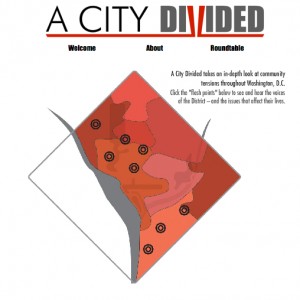
http://www.acitydivided.americanobserver.net/
A City Divided looks at D.C's issues with class, gentrification and more.
Yesterday, I posted an in-depth discussion with Jeremy Borden, Managing Editor of “A City Divided“, a special edition of the American Observer. Today, I’m serving up an interview with Dan Merica, who wrote “Different worlds reflected in the barber’s mirror” for the project.
Why barbershops?
Ever since I was young, I have found Barbershops interesting. People who come in don’t know each other, but they are still comfortable enough to talk. I was always fascinated by the range of conversations that happened. When I thought of this piece, I wanted to pick something that the two wards had in common. I considered ice cream parlors, bars, hardware stores…something that both wards have, but barbershops were the perfect place.
Which patrons were most interesting to talk to?
There was a guy named Tucker, he was the focus of the piece, he had just got out of jail– his perspective really struck me.






